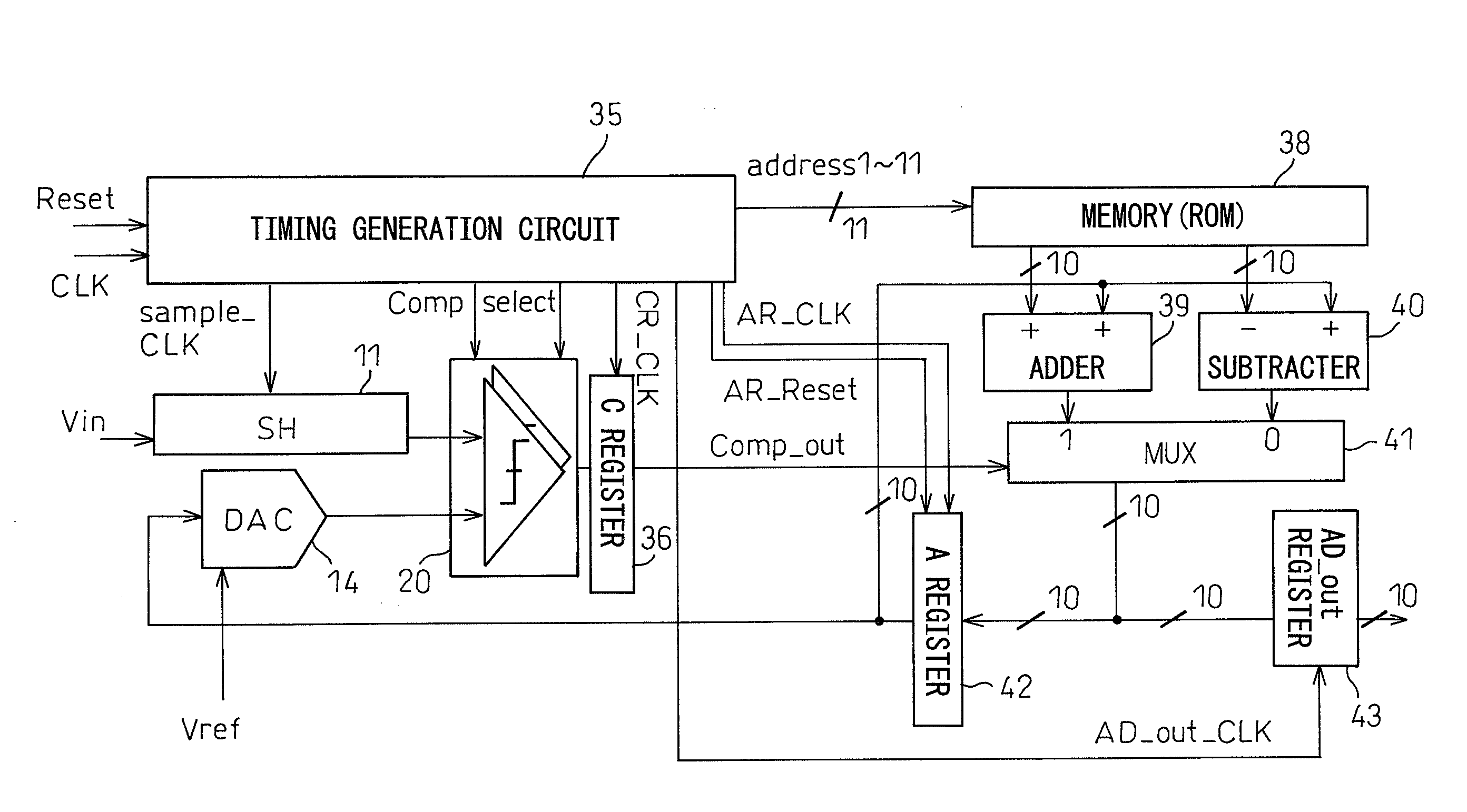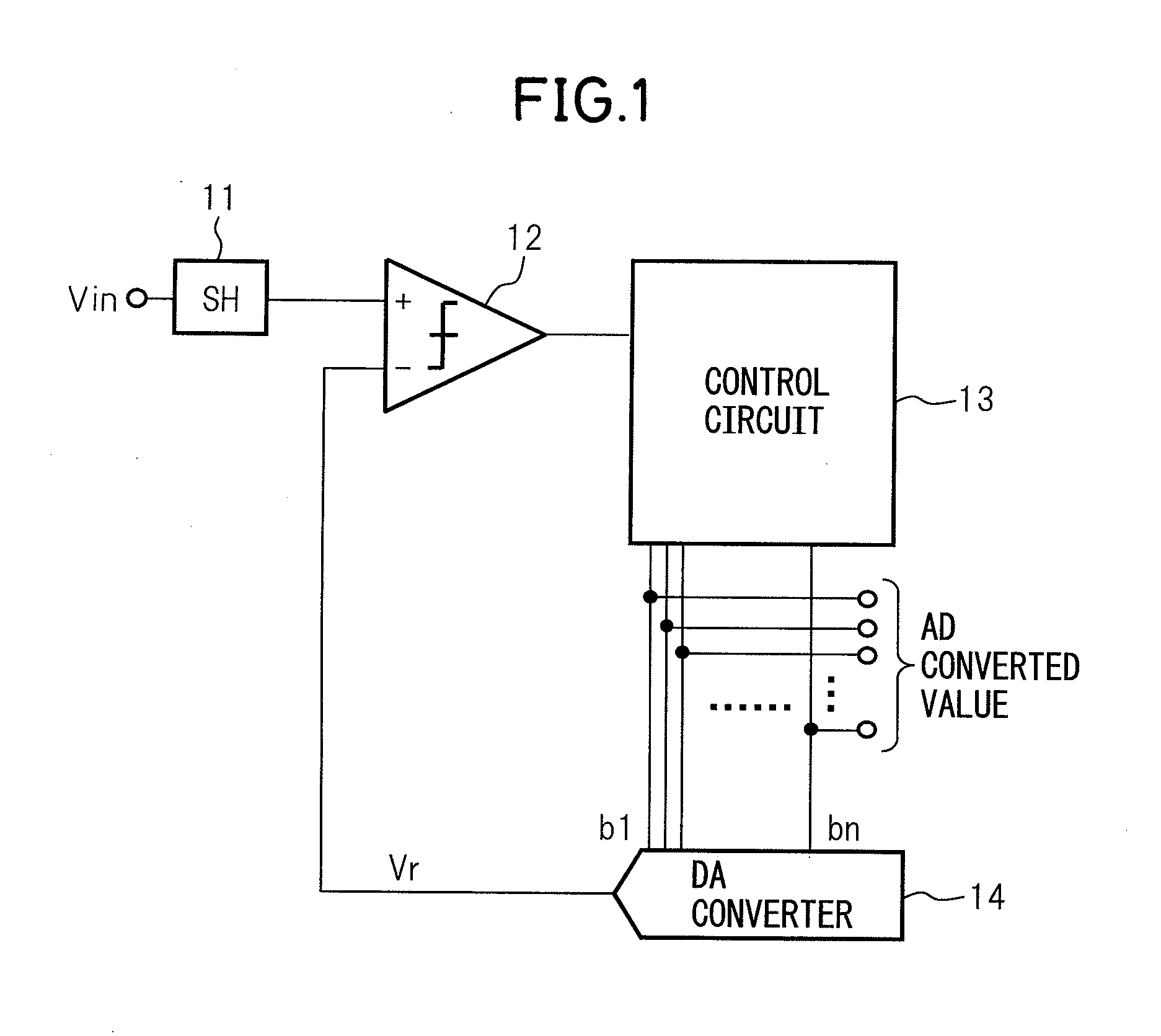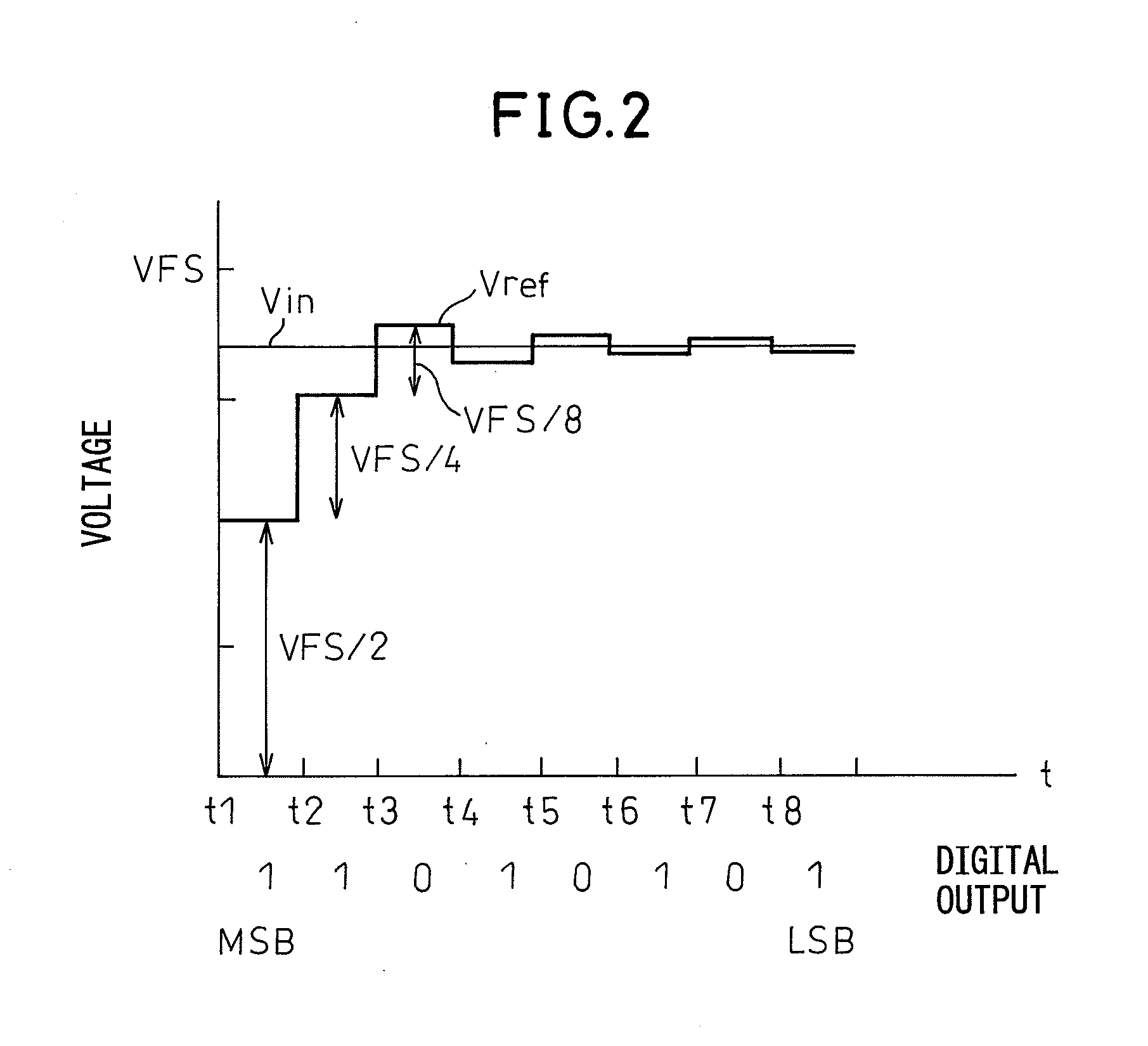Analog-to-digital converter
a converter and analog-to-digital technology, applied in analogue/digital conversion, transmission systems, instruments, etc., can solve the problems of mismatch of input-convertible offset between two comparators, deterioration of precision, and increase in circuit size accordingly, so as to increase the allowable range of offset mismatch, the number of comparison processing steps, and the number of reference capacitors.
- Summary
- Abstract
- Description
- Claims
- Application Information
AI Technical Summary
Benefits of technology
Problems solved by technology
Method used
Image
Examples
first embodiment
[0071]FIG. 10A to FIG. 10C are diagrams explaining an operation example when the SAR ADC in the first embodiment is assumed to be a 5-bit DAC. Because of five bits, the AD converted values have 32 levels from 0 to 31.
[0072]When the shift weight is binary, five steps of comparison operation are performed in the 5-bit DAC; however, in the SAR ADC in the first embodiment, as shown in FIG. 10A, six steps of comparison operation are performed. Then, in first to third steps, the first comparator 21 with low power consumption but high noise is used and in fourth to sixth steps, the second comparator 22 with high power consumption but low noise is used. In FIG. 8, in the first to third steps, the operating state selection circuit 24 supplies the signal Comp to the first comparator 21 and the selector 25 selects the output of the first comparator 21. In the first to third steps, the second comparator 22 is in the non-operating state. In the fourth to sixth steps, the operating state selectio...
second embodiment
[0078]FIG. 11 is a diagram showing a configuration of a 10-bit SAR ADC in the present invention.
[0079]The 10-bit charge-sharing SAR ADC in the second embodiment comprises the DAC 14, the comparator unit 20, a timing generation circuit 35, a C register 36, a memory 38, an adder 39, a subtracter 40, a multiplexer 41, an A register 42, and an AD_out register 43. The sample-holding circuit (SH) 11, the DAC 14, and the comparator unit 20 are the same as those in the first embodiment and the comparator unit 20 has the first comparator 21 and the second comparator 22. The timing generation circuit 35, the C register 36, the memory 38, the adder 39, the subtracter 40, the multiplexer 41, the A register 42, and the AD_out register 43 form the part corresponding to the control circuit 23 in the first embodiment.
[0080]The timing generation circuit 35 receives a reset signal Reset and a clock CLK and generates and outputs a timing signal sample_CLK, the timing signals Comp, select, and timing s...
third embodiment
[0104]As shown in FIG. 13, the charge-sharing SAR ADC in the third embodiment comprises a comparison processing part 51 having a C_array 52 and the comparator unit 20, a timing generation circuit 55, a C register 56, a shift register 57, a memory 58, an adder 59, a subtracter 60, the multiplexer 61, an A register 62, and an AD_out register 63. The parts except for the comparison processing part 51 form the part corresponding to the control circuit 17 in FIG. 3.
[0105]As shown in FIG. 14, the C_array 52 comprises the switch SW1, the input signal capacitor Cs, and 10 reference capacitor circuits 53-1, . . . , 53-10. As shown in FIG. 14, the configuration of each reference capacitor circuit has the same configuration as that of the conventional charge-sharing SAR ADC shown in FIG. 3. However, the conventional n-bit charge-sharing SAR ADC comprises n−1, i.e., nine reference capacitor circuits in the case of 10 bits; however, the 10-bit charge-sharing SAR ADC in the present embodiment dif...
PUM
 Login to View More
Login to View More Abstract
Description
Claims
Application Information
 Login to View More
Login to View More - R&D
- Intellectual Property
- Life Sciences
- Materials
- Tech Scout
- Unparalleled Data Quality
- Higher Quality Content
- 60% Fewer Hallucinations
Browse by: Latest US Patents, China's latest patents, Technical Efficacy Thesaurus, Application Domain, Technology Topic, Popular Technical Reports.
© 2025 PatSnap. All rights reserved.Legal|Privacy policy|Modern Slavery Act Transparency Statement|Sitemap|About US| Contact US: help@patsnap.com



